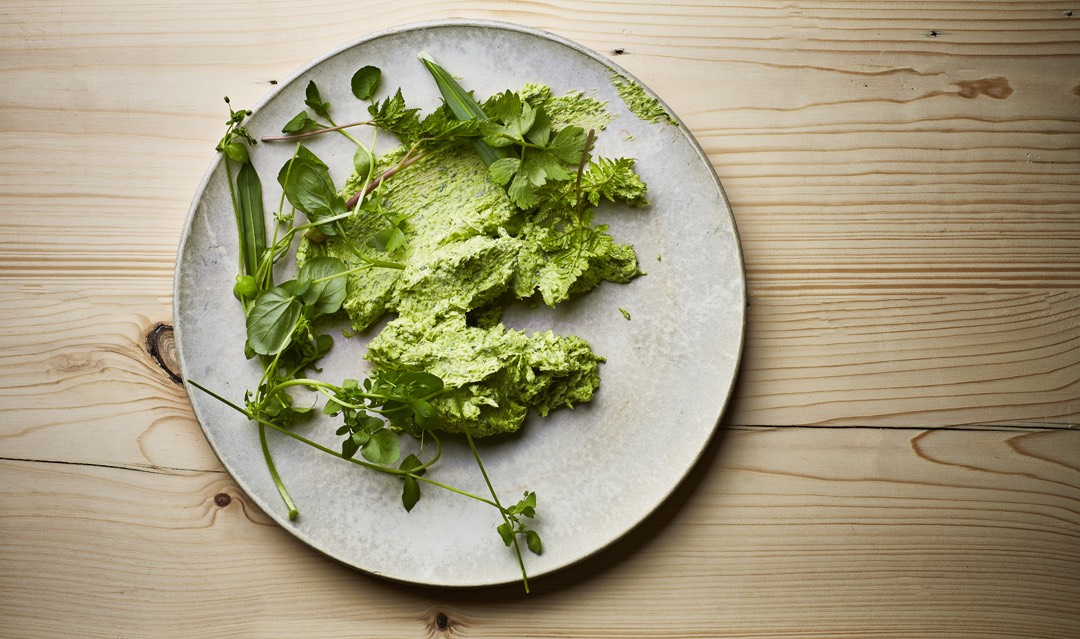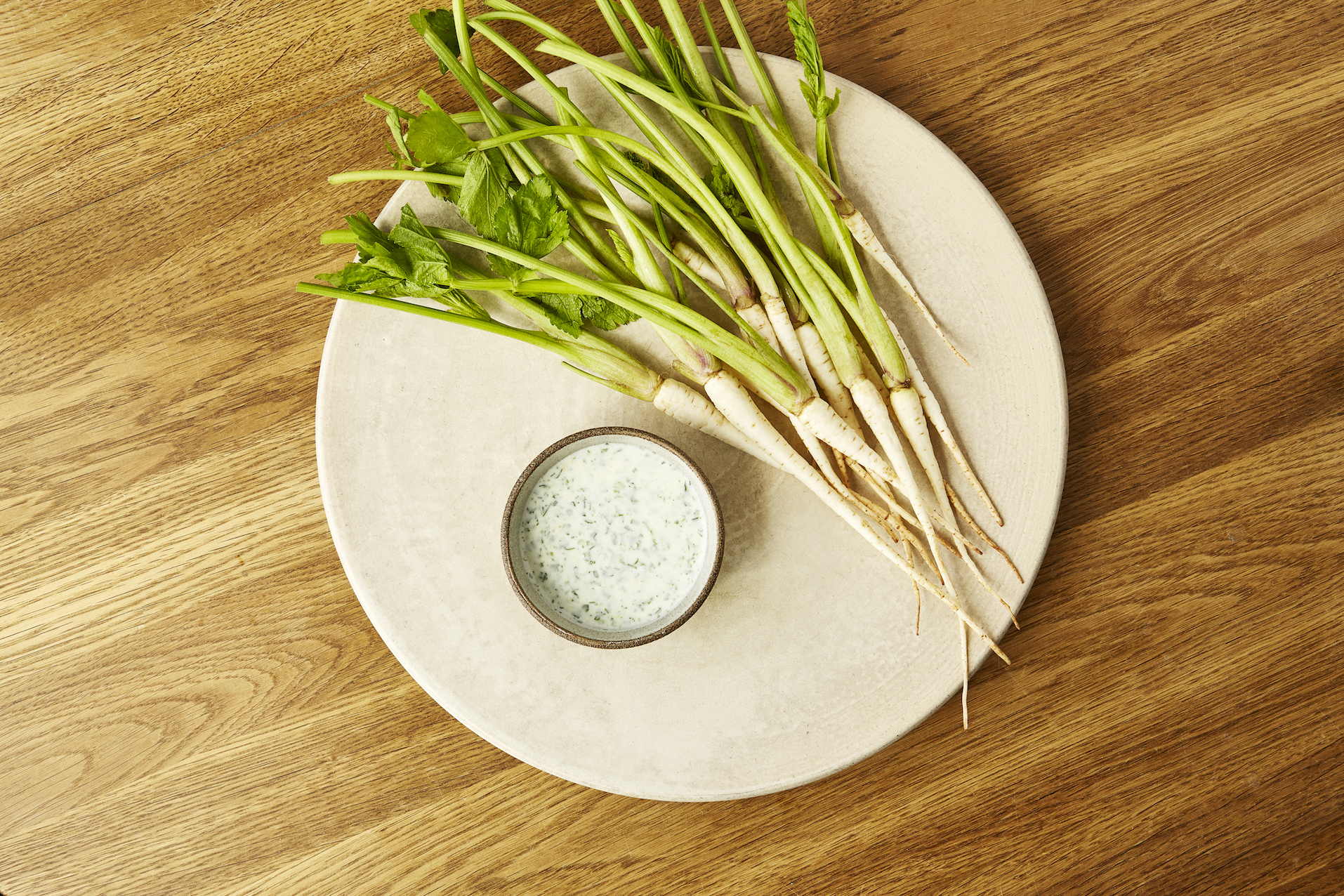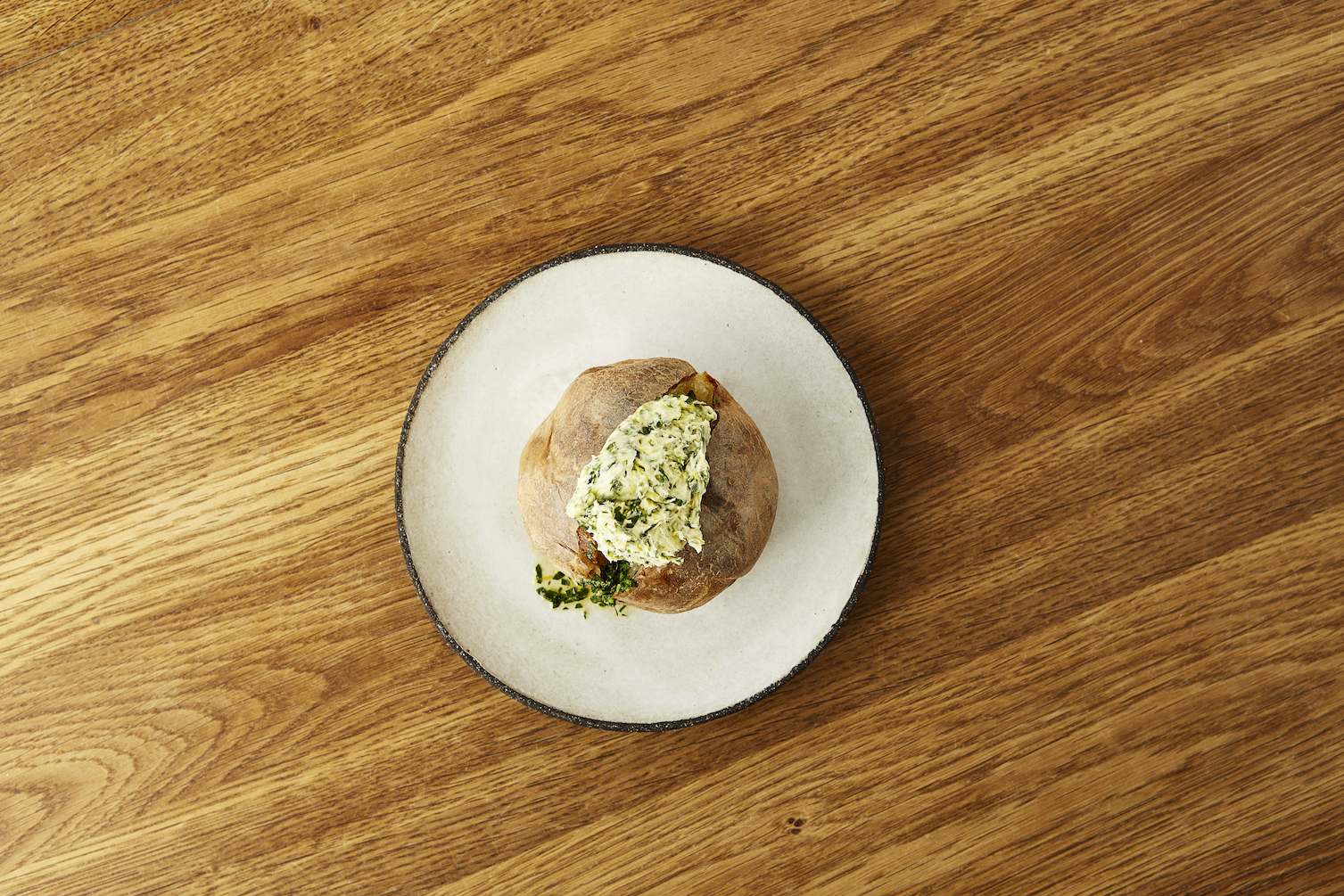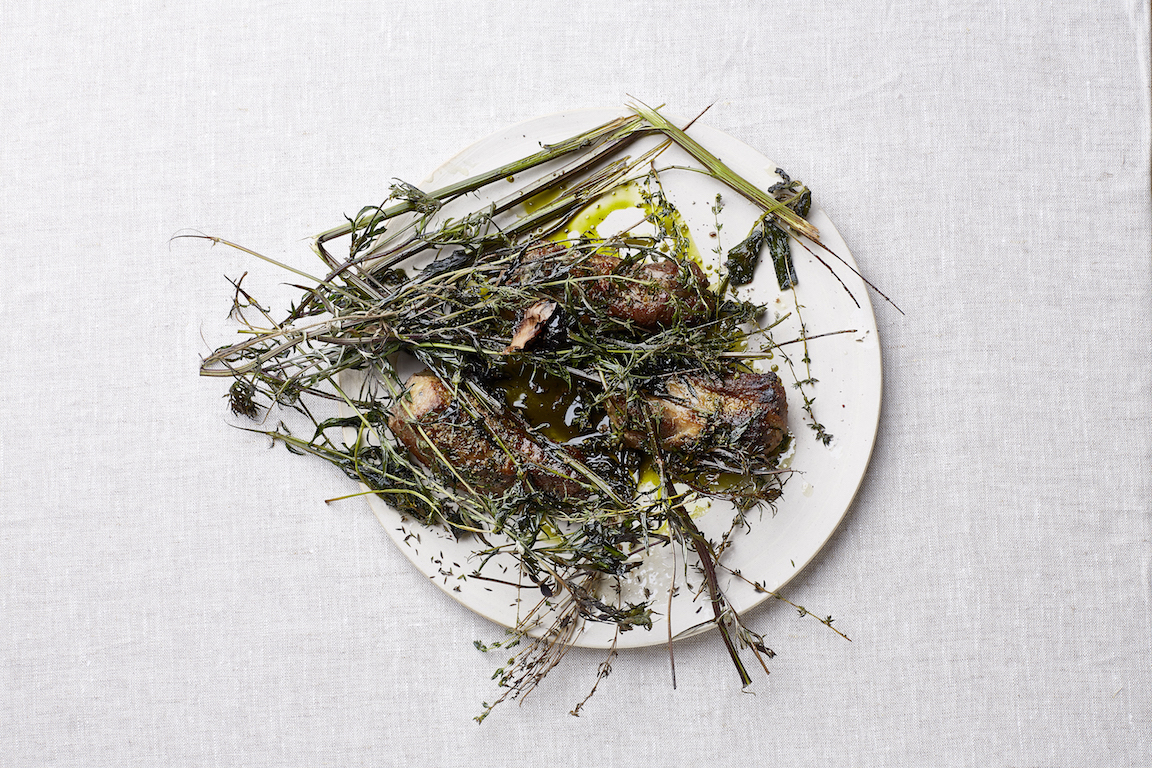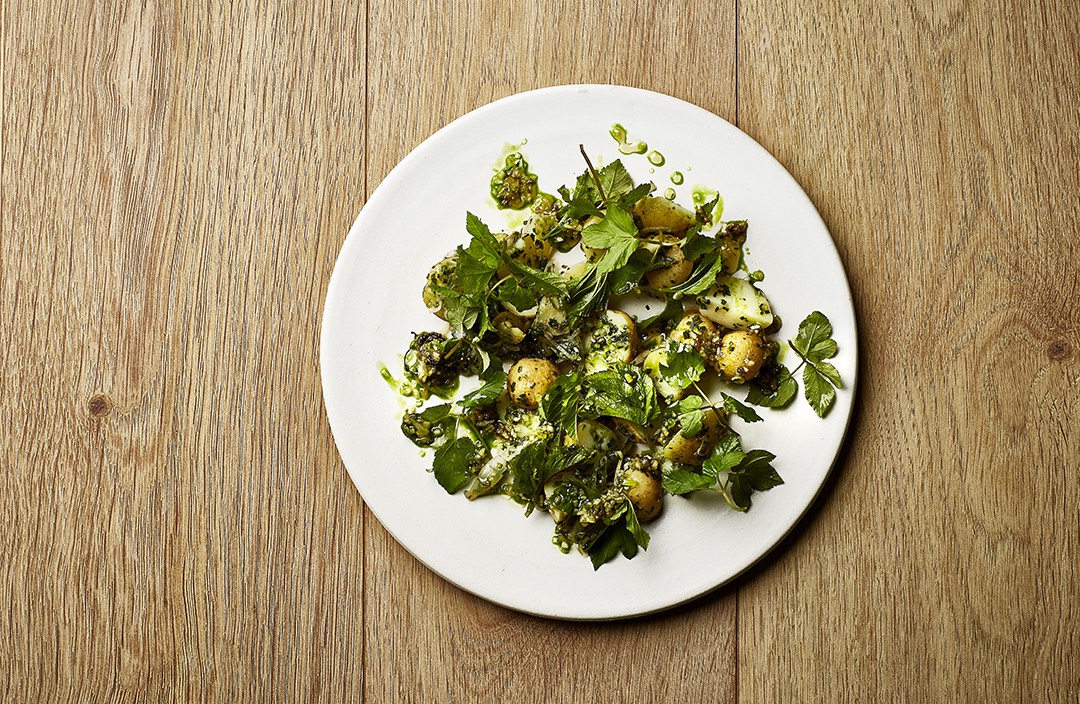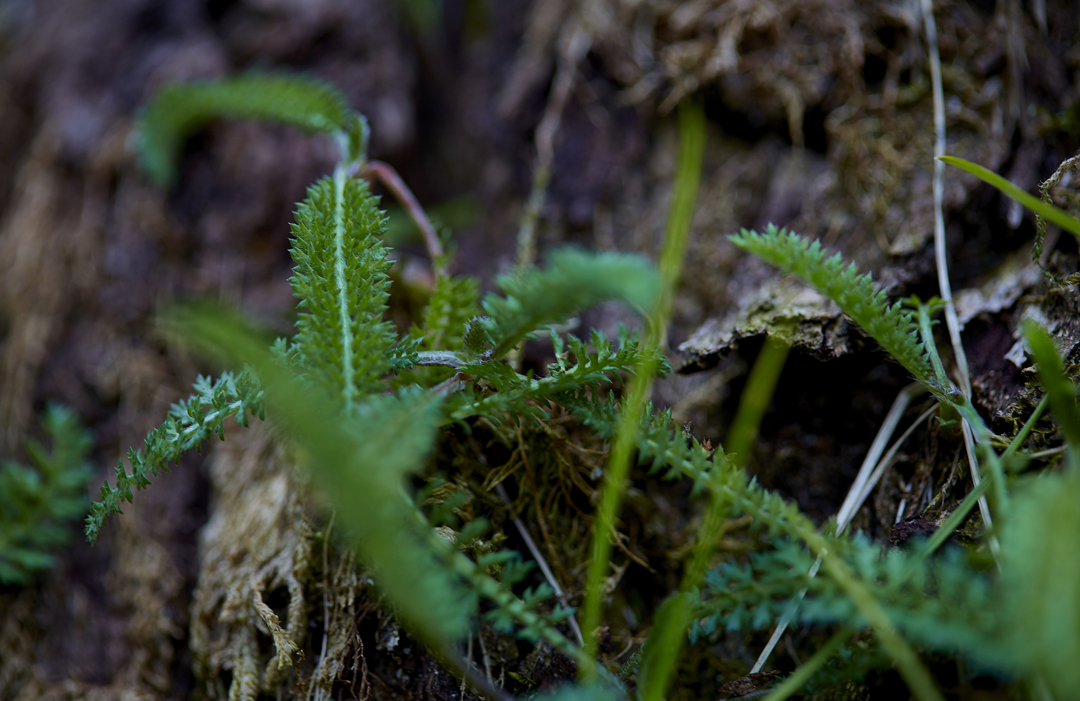
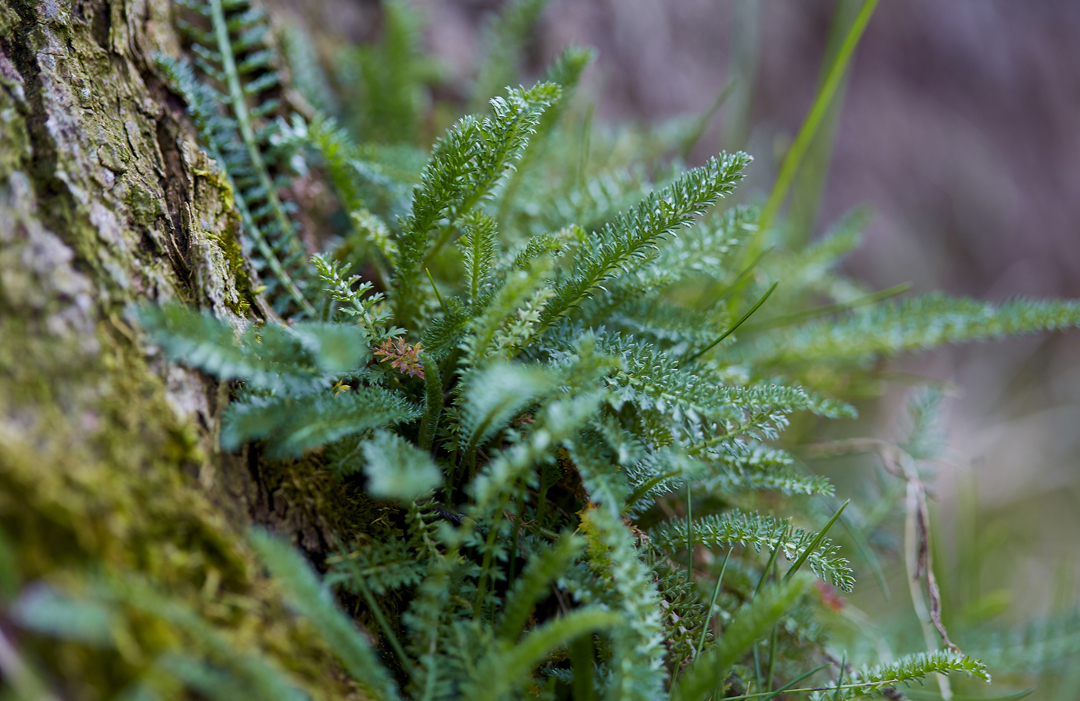
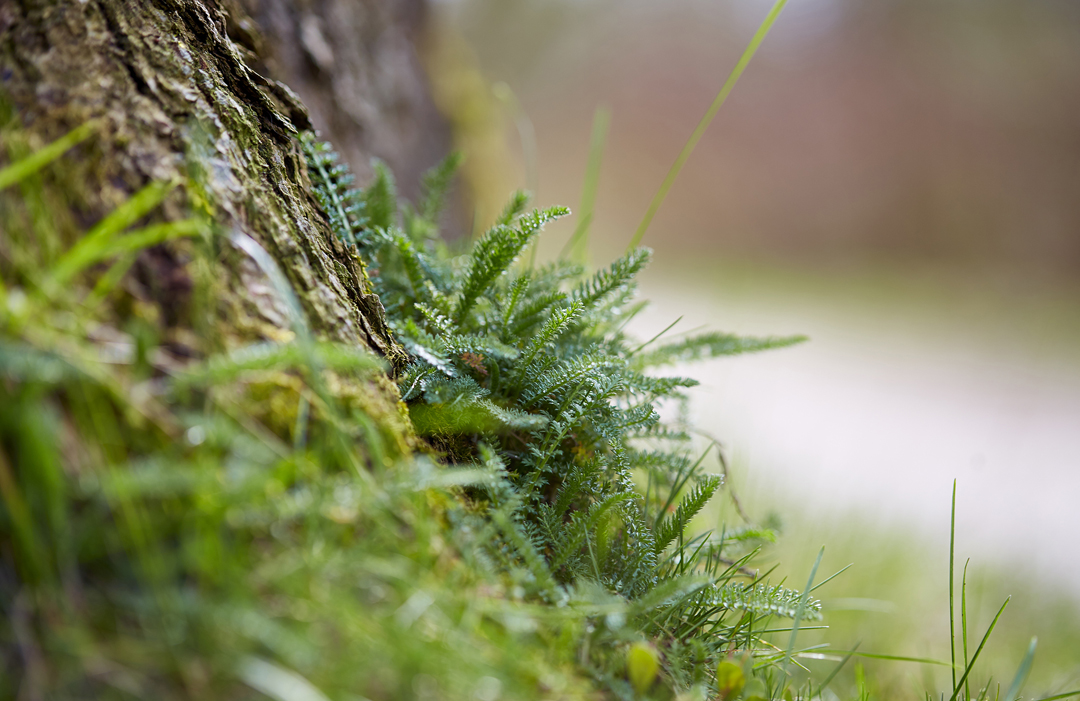
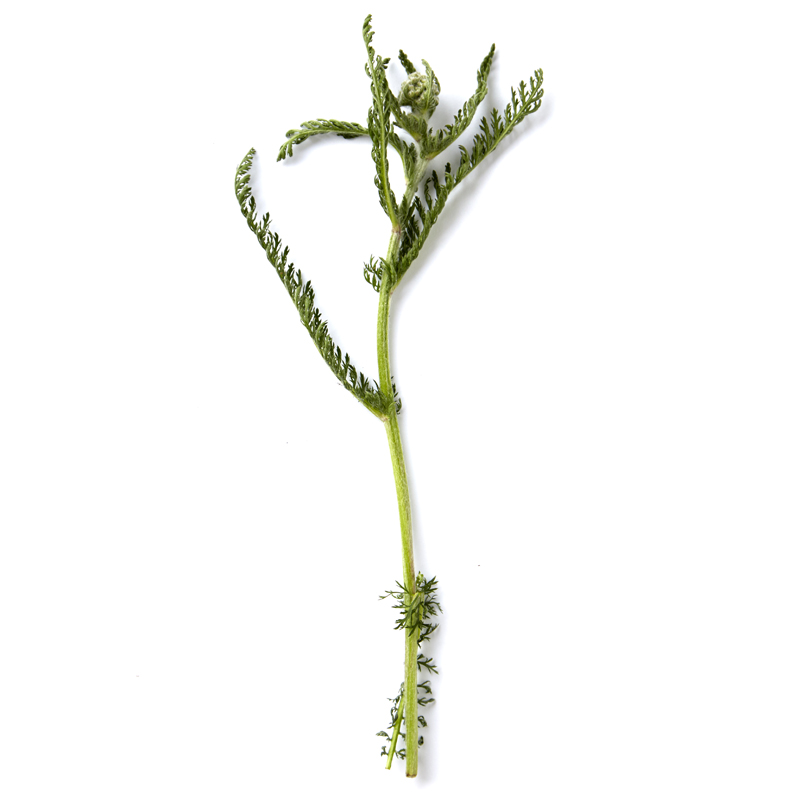
Yarrow
Yarrow is traditionally used in schnapps, but its aromatic and slightly bitter flavor makes it an interesting herb to experiment with in savory dishes.
-
Where to Find It
Yarrow can grow in almost any landscape. In urban areas, it's commonly found along streets and bicycle paths, in green spaces, and on lawns. It also grows in salt marshes, hedges, on roadsides, and grasslands. It's hardy and only needs light and suitably dry soil to thrive.
Salt marshes, coniferous forests, towns, hedges, roadsides, grasslands.
-
When to Find It
You can find yarrow in early spring, but it blooms from June until October. Yarrow will regrow after being cut back, so you’ll find new shoots outside of its actual season.
Shoots: April, May. -
How to Spot It
Yarrow is an herb that can grow 20-60 cm tall. You can recognize it by its leaves, which most closely resemble bird, and grow irregularly along its tall, tough stalk. Small white flowers that cluster together in saucer-sized umbels crown the stalk.
-
How to Pick It
Both the leaves and flowers of yarrow are edible. If you are going to use the former raw, you’ll want young leaves that aren’t too tough, so focus on new sprouts. The large leaves, while not good to eat, can still be used to season a dish.
-
NB!
The Ministry of Environment and Food of Denmark recommend limited consumption. There are no reports of poisoning, but yarrow is listed on the Poison Control webpage, where it is stated yarrow cause sickness.
Leaves and flowers: June, July, August, September, October.
Risk of misidentifying the plant
There is no risk of mistaking the plant for another dangerous or undesirable plant.


